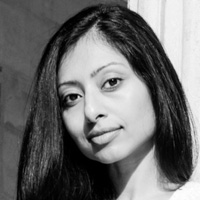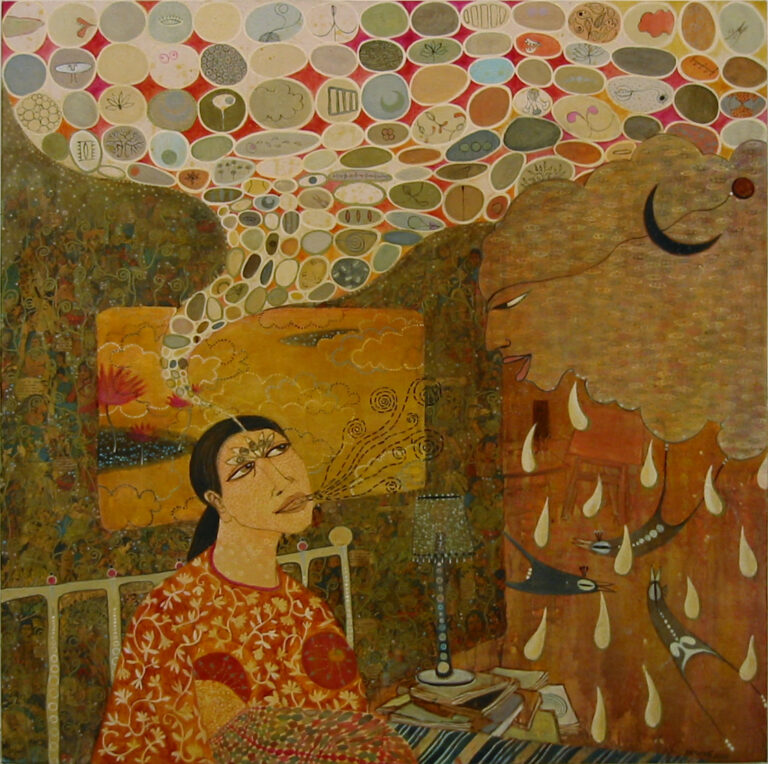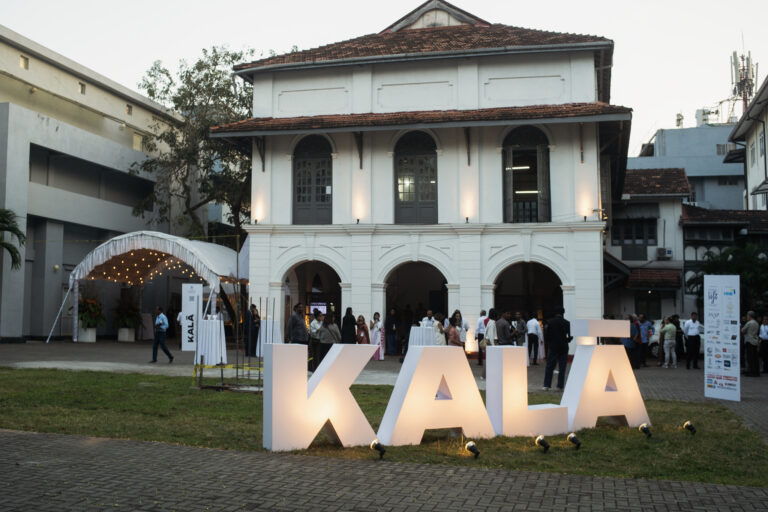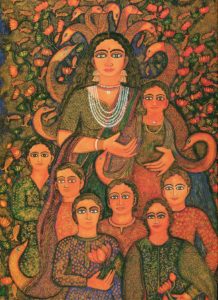
The first time I encountered at one of JayasriBurman’s paintings, I thought I knew her. Not the artist herself, but the woman in the work. Her eyes were open fully in the opaque light of a painted sun and her skin blushed a feral almandine. The woman was part swan, in a state of becoming. The more I looked, the more the body was a fluid form that opposes a stark differentiation between woman and bird. Surrounding her were repetitions of lines, curves, and minutiae which seemed to grow on top of one another organically, finally bursting forth in the forms and colours which made up the composition.
When I visited her home in Delhi just a few months ago, Burman treated me to a new side of her craft: her writing. Unable to read Burman’s Bengali prose, I was mesmerized by art historian Ina Puri’s translations of her words. Her writing, rather than an account of detailed events, was a collection of lightly sketched impressions, focused on particular emotions. These record are a telling view into the inspirations and evocations of her canvases. Whether it is the pain of September 11th or a private incident, her writing, like her paintings, are compressions of time, both imagined and real, interlocking the present day with a reconstructed past.
Born in Kolkata, Burman’s first impressions of art were a mix of local flavours and international styles. Her uncle, renowned artist Shakti Burman, was an influential figure in developing her interest in art. However, her education in Shantiniketan and then later in France furnished her with a style and vision that is distinctly her own.
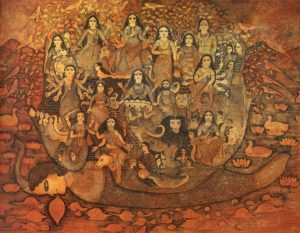
Though infused with multiple lexicons, Burman is not interesting in narrating an authoritative history of Indian culture or Hindu mythologies. Rather, her work circulates in a dialogue between remembered stories and daily experience. She re-centres myths, focusing on forgotten moments, pushing them to their points of origin, carefully outlining the woman as well as the mythical creature. Positioned as part animal and part human, these beauties have the allure of sirens. Burman, however undercuts notions of the succubus, the chimera which are vessels of masculine fears. Instead, they are gentle beings and benevolent goddesses, blooming between the viewer and the distance. Significantly, Burman finds a place for the sacred to reside in modern India. This journey is personal and spiritual by turn. Regardless of caste or creed, Burman’s images and deities belong to no one in particular but are open to appropriation and inspiration in general.
Burman’s process is very telling of this fact. She begins with a figure in the canvas, which might be based on a woman she knows or has seen. The story then begins to emerge, as layers are added to the person and her surroundings. The space that emerges from her paintings is not a simple combination of myth and reality, but parallel to a ‘third space’, which is more than the summation of its parts, and which produces new complex narratives rather than containing old ones.
As an artist, Burman continues to push the boundaries of her own practice, which makes her retrospective at Lalit Kala Akademi in Delhi all the more interesting. Her experiments with sculpture were exhibited for the first time alongside her watercolour paintings and ink drawings. The exhibition, entitled ‘A Mythical Universe,’ was accompanied by a monograph of the same title, and contained more than 200 images of Burman’s work spanning her whole career. The book, edited by Ina Puri, contains revealing essays by the likes of ParthaMitter, PritishNandy and Ashok Vajpeyi celebrating Burman’s ability to weave masterful stories that speak to the Indian psyche.
Image Courtesy: Art Alive Gallery, New Delhi.









